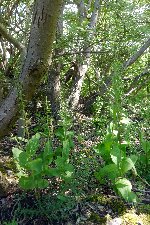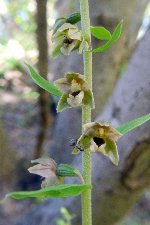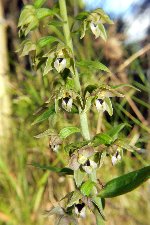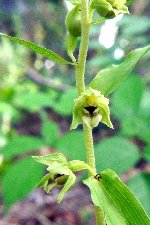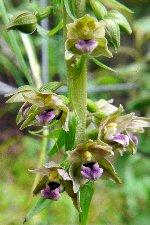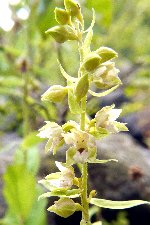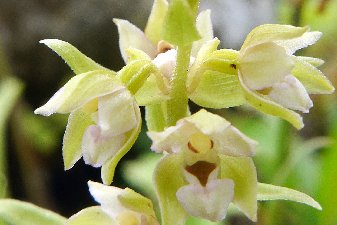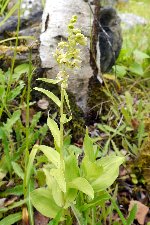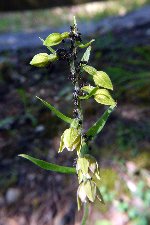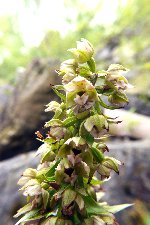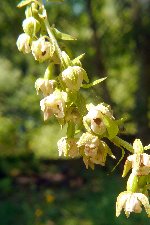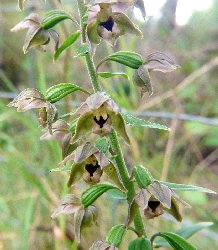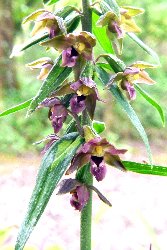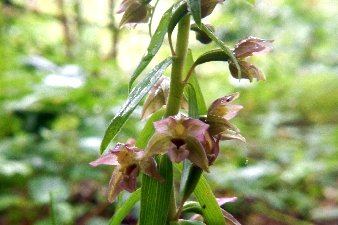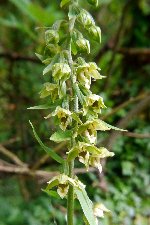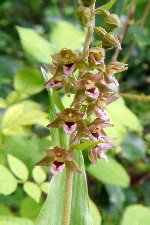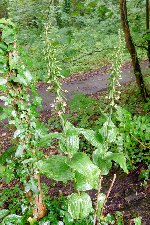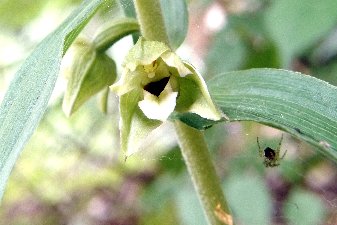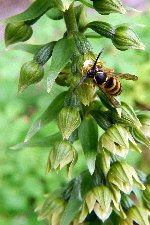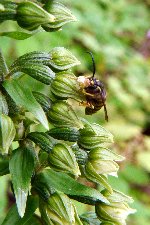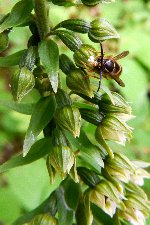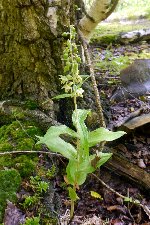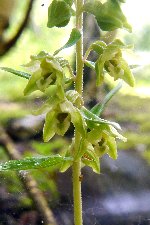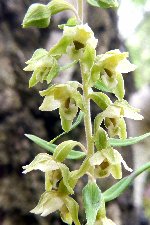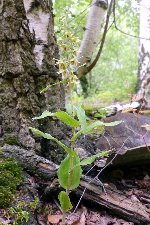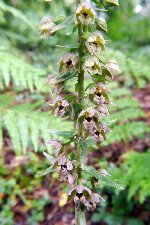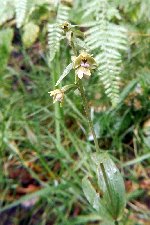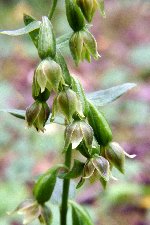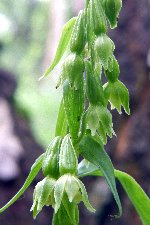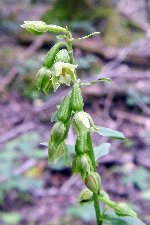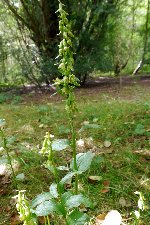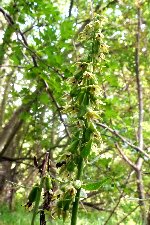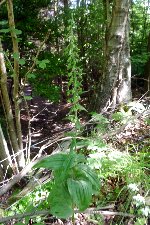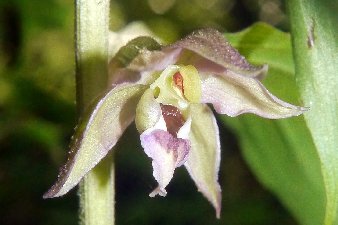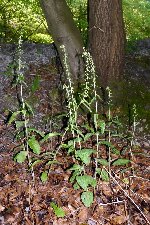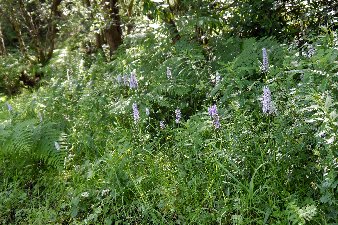|
|
|||||||||||||||||
|
|
|||||||||||||||||
 |
|
Minera Lead Mines, 9th and 15th July 2017 (SJ2751450929) We have come here on the basis that orchids are often opportunistic colonisers of old industrial sites. This seems to be a good local candidate site. Unfortunately the actual museum and buildings are now closed, but there is freedom to wander. Obviously there are Common Spotted Orchids around but nothing special to report. The first Broad-leaved Helleborines are found in the trees beside the museum site, and more are found on land beyond. A walk along the former railway track yields many more, especially either side of where there was a level crossing on the road to Worlds End. Compared to the colour diversity of the Broad-leaved Helleborines I see at Hoseley Woods these are a fairly uniform population, so my eyes are drawn to a subset. These have quite pale flowers, not as open as the others, and with brighter green leaves which also seem to be much longer and thinner. My thoughts leapt to Young's Helleborine, a form of BLH which grows on former industrial sites. However a close examination of the flowers shows the presence of a viscidium and intact pollinia, so is not self-pollinating. Are those leaf edges wavy? Am I seeing too much? A return to the area six days later and, to be honest, nothing much has changed; many are still in tight bud. But, it is a chance to get better photos of items of interest.
Hoseley Woods, 10th and 14th July 2017 A drizzly and overcast day is not the best to visit here. The trees cut down the light levels even more, and my injury makes holding the camera steady more of a task; especially when small flying insects keep landing on exposed skin. I tend to swell up quite a lot from gnat bites, and I didn't pack the repellent today. Too many photos today turn out to be a bit blurred and are rejected. I needed a tripod.
One plant attracts some interest on social media. It looks like a E. helleborine var. chlorantha, or very close to it. But also it was mooted that it could be a Broad-leaved x Green-flowered hybrid. Certainly there are physical appearances that are allied to E. phyllanthes, such as unpigmented bases to the ovary stalks, but this hybrid is a remote as remote possibility. The pollen plant would have to be the E. phyllanthes, but the nearest source would be a mile or so away. And the pollinating insect would have to visit a plant that does not attract insects, and often self-pollinates before the flowers are open. Another plant at the site also looks like var chlorantha, so this could be a local thing. Neither has the full-blown chlorantha appearance with a greenish tinge to the inside of the hypochile. Delamere Forest, 10th July 2017 (SJ5538671345) It seems a poor year for Dune Helleborines with only four weedy plants found on the lake side of the path. The path edge on the forest side seems too overgrown with too much bracken. We do make a new discovery. There is one good, and two small Broad-leaved Helleborines not far from the Dunes. In fact one of those grows with these. I am sure that there must be a larger BLH population here, but the forest is so large we probably cover 0.1% in a couple hours of rambling. It's going to be chance and luck more than educated guesses to find more plants. Alyn Waters Country Park, 14th July 2017 (SJ329551) This could be the final visit of the year here; rather early due to the early flowering season of 2017, The Dune Helleborines are virtually finished, but the Green-flowered Helleborines are still going strong, albeit with more evidence of rabbit attack. There is no sign of the unusual Helleborine I saw last year, which is a shame because it would be nice to discover if that was something special. Under some trees on the eastern tip of the main woodland is a thriving colony of yet more GFH, many in flower and of good size. They seem to prefer being under the trees rather than on the periphery. Perhaps next year a peek at the woods that run down to the road at Llay may yield even more.
We started the day trying to explore footpaths behind the village of Bwlchgwyn, but gave up as they seemed too over grown with nettles, brambles and thistles; not the best combination of plants. All we saw were some scattered Common Spotted Orchids, which have been mentioned before, and seem to grow all around the village.
|
|
|
||||||||||||||
